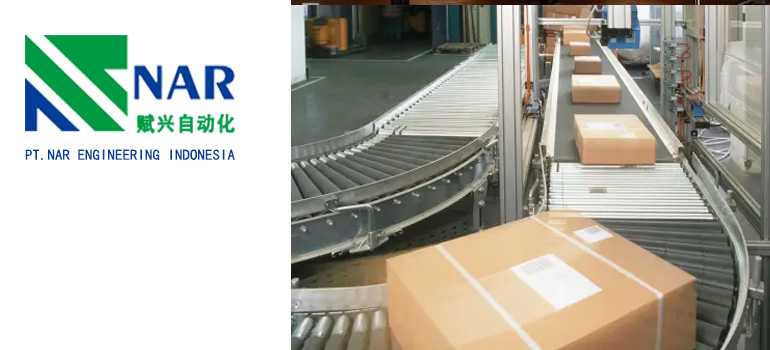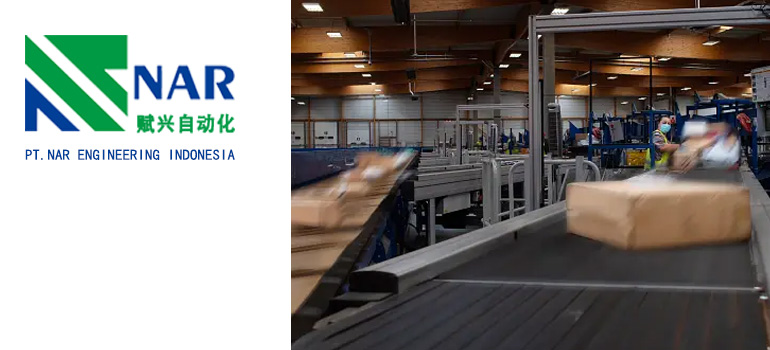Summary:
Boosting Productivity: The Ultimate Guide to Belt Conveyor Efficiency
What is Belt Conveyor Efficiency?
Factors Affecting Belt Conveyor Efficiency
Importance of Optimizing Belt Conveyor Efficiency
Strategies for Improving Belt Conveyor Efficiency
Maximizing Productivity through Belt Conveyor Efficiency
What is Belt Conveyor Efficiency?
The efficiency of a belt conveyor refers to the ratio between the ability of a belt conveyor system to achieve material transmission during operation and the resources consumed. In short, it measures the balance between the workload achieved by the conveyor during operation and the energy, time, and cost consumed.
This efficiency not only involves how fast the conveyor can transport materials, but also includes the energy, materials, and human resources consumed in this process. In other words, efficient belt conveyors can not only transport large amounts of materials in a short period of time, but also complete this task with minimal resource consumption.
Therefore, the efficiency of belt conveyors is not only about speed, but also about maximizing the utilization of resources and achieving efficient material transportation during operation.
Factors Affecting Belt Conveyor Efficiency

Several factors can influence the efficiency of belt conveyors. Here are some key factors to consider:
Equipment Condition: The condition of the conveyor equipment itself plays a significant role in efficiency. Regular maintenance and upkeep are crucial to ensure smooth operation and minimize downtime.
Belt Design and Quality: The design and quality of the conveyor belt can impact efficiency. Factors such as belt material, width, thickness, and flexibility can affect how efficiently materials are transported.
Loading and Unloading Processes: Efficient loading and unloading processes are essential for maximizing conveyor efficiency. Properly designed loading zones, chutes, and transfer points can reduce spillage and material degradation, improving overall efficiency.
Belt Speed and Tension: Optimizing belt speed and tension is important for achieving the desired throughput while minimizing energy consumption. Balancing these factors ensures efficient material transport without causing excessive wear and tear on the conveyor system.
Material Characteristics: The type, size, and characteristics of the material being conveyed can affect conveyor efficiency. Abrasive or sticky materials may require special considerations to prevent belt damage and maintain efficiency.
Environmental Conditions: Environmental factors such as temperature, humidity, and dust can impact conveyor performance. Proper ventilation, dust suppression systems, and temperature control measures can help maintain optimal operating conditions and efficiency.
Operating Practices: Operator training and adherence to best practices are critical for maximizing conveyor efficiency. Proper loading techniques, monitoring of belt conditions, and proactive maintenance can all contribute to improved performance.
Automation and Control Systems: Implementing automation and advanced control systems can enhance conveyor efficiency by optimizing speed, load distribution, and energy usage based on real-time conditions.
Energy Efficiency Measures: Implementing energy-efficient components and technologies, such as high-efficiency motors, variable frequency drives, and regenerative braking systems, can help reduce energy consumption and improve overall conveyor efficiency.
System Integration: Integrating the conveyor system with other processes and equipment in the production line can improve overall efficiency and throughput. Seamless integration minimizes bottlenecks and downtime, maximizing the efficiency of the entire operation.
By addressing these factors and implementing appropriate measures, businesses can optimize the efficiency of their belt conveyor systems, leading to improved productivity, reduced costs, and enhanced competitiveness.
Importance of Optimizing Belt Conveyor Efficiency
Optimizing belt conveyor efficiency is crucial for several reasons:
Cost Reduction: Efficient belt conveyors consume less energy and resources, leading to lower operating costs. By optimizing efficiency, businesses can save on electricity, fuel, maintenance, and repair expenses, ultimately improving their bottom line.
Increased Productivity: Efficient belt conveyors can handle larger volumes of materials in less time, resulting in increased productivity. By minimizing downtime, optimizing throughput, and reducing material handling bottlenecks, businesses can achieve higher production rates and meet customer demands more effectively.
Improved Resource Utilization: Optimizing belt conveyor efficiency means getting the most out of available resources, including equipment, labor, and materials. By maximizing the use of conveyor systems and minimizing waste, businesses can improve resource utilization and enhance overall operational efficiency.
Enhanced Safety: Well-maintained and efficient belt conveyors contribute to a safer working environment. By reducing the risk of accidents, injuries, and equipment failures associated with inefficient operation, businesses can create a safer workplace for their employees.
Environmental Benefits: Energy-efficient belt conveyors consume less electricity and produce fewer emissions, leading to environmental benefits such as reduced carbon footprint and lower environmental impact. Optimizing efficiency aligns with sustainability goals and demonstrates a commitment to environmental responsibility.
Competitive Advantage: Businesses that operate efficiently are better positioned to compete in the market. By optimizing belt conveyor efficiency, companies can offer competitive pricing, faster delivery times, and superior service, attracting and retaining customers in a competitive business landscape.
Reliability and Longevity: Efficiently operated belt conveyors experience less wear and tear, resulting in extended equipment life and improved reliability. By investing in maintenance and optimization measures, businesses can prolong the lifespan of their conveyor systems and reduce the need for costly replacements or repairs.
Adaptability and Flexibility: Optimized belt conveyor systems are more adaptable to changing production requirements and market conditions. Businesses can quickly adjust conveyor speeds, configurations, and capacities to accommodate fluctuations in demand, ensuring operational flexibility and agility.
In summary, optimizing belt conveyor efficiency is essential for reducing costs, increasing productivity, improving resource utilization, enhancing safety, achieving environmental sustainability, gaining a competitive edge, ensuring reliability, and maintaining operational flexibility. By prioritizing efficiency optimization, businesses can unlock numerous benefits and drive success in today’s dynamic marketplace.
Strategies for Improving Belt Conveyor Efficiency
Improving belt conveyor efficiency involves implementing a range of strategies aimed at maximizing throughput, minimizing downtime, and optimizing resource utilization. Here are several key strategies for achieving these objectives:
Regular Maintenance and Inspection: Implement a proactive maintenance schedule to identify and address potential issues before they lead to downtime. Regularly inspect conveyor components such as belts, rollers, pulleys, and bearings, and promptly replace worn or damaged parts to maintain optimal performance.
Optimized Belt Tracking: Ensure proper alignment and tracking of the conveyor belt to prevent mistracking, which can cause spillage, belt damage, and increased energy consumption. Use tracking devices and adjusters to maintain correct belt alignment throughout the conveyor system.
Efficient Material Handling Practices: Implement efficient loading and unloading processes to minimize spillage, reduce material degradation, and improve throughput. Use proper chute designs, loading zones, and transfer points to facilitate smooth material flow and minimize impact on the conveyor belt.
Belt Cleaning Systems: Install effective belt cleaning systems to remove carryback and debris from the conveyor belt, ensuring optimal belt performance and preventing material buildup that can lead to belt mistracking and increased friction.
Optimized Belt Tension: Adjust belt tension to the optimal level to minimize slippage and maximize power transmission efficiency. Proper tensioning helps maintain consistent belt speed and reduces wear on conveyor components.
Energy-Efficient Drive Systems: Upgrade to energy-efficient drive systems such as variable frequency drives (VFDs) and regenerative braking systems to optimize energy usage and reduce operating costs. VFDs allow for adjustable conveyor speeds based on production demands, while regenerative braking systems recover energy during deceleration, further improving efficiency.
Automation and Control Systems: Implement automation and advanced control systems to optimize conveyor operation based on real-time conditions. Automated controls can adjust conveyor speed, monitor system performance, and identify potential issues, improving efficiency and reducing the need for manual intervention.
Training and Operator Awareness: Provide comprehensive training for operators to ensure they understand proper conveyor operation, maintenance procedures, and safety protocols. Educated operators can identify efficiency opportunities, troubleshoot issues, and optimize conveyor performance effectively.
Data Monitoring and Analysis: Utilize sensors and monitoring devices to collect data on conveyor performance, including speed, throughput, and energy consumption. Analyze this data to identify trends, detect inefficiencies, and implement targeted improvements to maximize efficiency.
Continuous Improvement Culture: Foster a culture of continuous improvement by encouraging feedback, innovation, and collaboration among team members. Regularly review performance metrics, solicit input from operators and maintenance personnel, and implement best practices to continuously optimize conveyor efficiency.
By implementing these strategies and continuously monitoring and optimizing conveyor performance, businesses can improve belt conveyor efficiency, reduce operating costs, and enhance overall productivity and competitiveness.
Maximizing Productivity through Belt Conveyor Efficiency
Maximizing productivity through belt conveyor efficiency requires a comprehensive approach that focuses on optimizing throughput, minimizing downtime, and enhancing overall operational efficiency. Here are several strategies to achieve this goal:
Proactive Maintenance Planning: Implement a proactive maintenance plan that includes regular inspections, preventive maintenance, and timely repairs. By identifying and addressing potential issues before they lead to downtime, you can maximize conveyor uptime and productivity.
Optimized Conveyor Speed and Throughput: Adjust conveyor speed and throughput to match production demands while minimizing energy consumption and wear on conveyor components. Utilize automation and control systems to dynamically adjust conveyor speed based on real-time production requirements.
Efficient Material Handling Practices: Streamline material handling processes to minimize bottlenecks and optimize material flow through the conveyor system. Utilize efficient loading and unloading techniques, proper chute designs, and material handling accessories to maximize throughput and minimize downtime.
Reduced Downtime with Predictive Maintenance: Implement predictive maintenance techniques such as vibration analysis, thermography, and oil analysis to predict equipment failures and schedule maintenance proactively. By addressing potential issues before they result in unplanned downtime, you can maximize conveyor productivity and minimize production disruptions.
Enhanced Conveyor Reliability: Invest in high-quality conveyor components, including belts, rollers, bearings, and drives, to improve overall conveyor reliability and reduce the risk of unplanned downtime. Utilize redundancy and backup systems where feasible to minimize the impact of equipment failures on production.
Continuous Process Improvement: Foster a culture of continuous improvement by regularly reviewing conveyor performance metrics, soliciting feedback from operators and maintenance personnel, and implementing process improvements to optimize productivity. Encourage collaboration and innovation to identify and implement efficiency-enhancing initiatives.
Operator Training and Engagement: Provide comprehensive training for conveyor operators to ensure they understand proper operation, maintenance procedures, and safety protocols. Engage operators in ongoing improvement efforts and empower them to identify and address efficiency opportunities proactively.
Data-Driven Decision Making: Utilize data monitoring and analysis tools to collect and analyze conveyor performance data, including throughput, downtime, energy consumption, and maintenance activities. Use this data to identify trends, detect inefficiencies, and make data-driven decisions to optimize conveyor productivity.
Investment in Technology and Innovation: Stay abreast of emerging technologies and innovations in conveyor systems, automation, and control systems. Invest in technologies such as robotics, artificial intelligence, and advanced sensors to improve conveyor efficiency and productivity.
Collaboration with Suppliers and Partners: Collaborate closely with conveyor suppliers, maintenance contractors, and other partners to leverage their expertise and resources in optimizing conveyor productivity. Build strong relationships with suppliers to ensure timely access to spare parts, technical support, and maintenance services.
By implementing these strategies and adopting a holistic approach to maximizing productivity through belt conveyor efficiency, businesses can optimize throughput, minimize downtime, and enhance overall operational performance.

